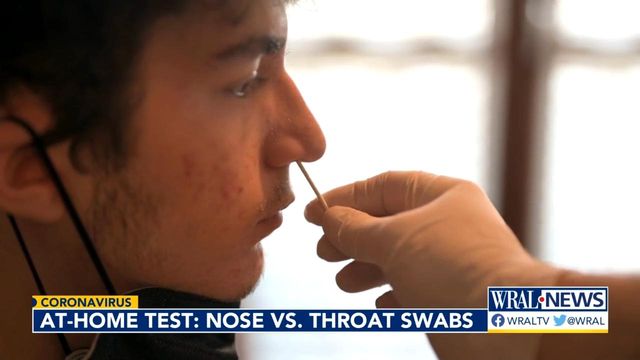NC wastewater data shows 55% increase in COVID particles in one week
The number of coronavirus particles found in North Carolina’s wastewater has increased by 55% in the past week, according to state data released Wednesday.
North Carolina hasn't seen a weekly jump in COVID-19 wastewater particles this high since April, data from the Department of the Health of Human Services shows.
The number of new coronavirus cases reported to the state is not in line with amount of coronavirus seen in North Carolina’s wastewater. It indicates the state's data is likely not capturing the full extent of COVID-19 in North Carolina.
Health leaders say that the state's coronavirus case numbers are not tracking the full extent of COVID-19 in the community due to the number of at-home positive tests that are not required to be reported to the state.
COVID-19 testing trends in NC
New coronavirus cases increased by only 7% this week compared to last week. That's the most they've increased since May 28, but is still not on par with the increase seen in wastewater data.
Jessica Dixon, infection prevention specialist at WakeMed Health & Hospitals, said that based off her experience and her colleagues' experiences, "there is a lot more COVID out there than maybe is reflected in the official data."
Dixon also said that the state's case count is likely declining due to the limited number of test sites and increase in at-home test availability. Wake County, for example, ran out of federal COVID-19 funding and scaled back on how much coronavirus testing it could provide.
Emergency room visits related to COVID-19 have remained steady since June. About 6% of all emergency room visits across North Carolina are for people with COVID-19 symptoms, compared to 25% in January of this year.
New reported COVID-19 cases in the U.S.
Data collected and updated daily by the Johns Hopkins University Coronavirus Resource Center shows both new cases and a seven-day rolling average in the U.S. since Feb. 24, when the country broke about 100 total cases.
Source: Johns Hopkins CSSE
Graphic: Tyler Dukes & Alex Phillips, WRAL
Some 50% of all coronavirus cases sequenced by DHHS this week were from the coronavirus subvariant BA.5, which doctors say is the most contagious variant yet. Doctors and experts are still unsure if this variant causes more severe illness.
The number of new coronavirus patients admitted to the hospital with COVID-19 may provide key insights as to how rapidly the latest variant is spreading in North Carolina. Over the past month, the number of new patients admitted to the hospital with COVID-19 has increased by 32%, while the number of new cases reported to the state has only increased by 19%.
Dixon said that hospitalizations and ICU admissions tend to lag behind case count increases. She predicts North Carolina could see an even greater increase in hospitalizations in the coming weeks.
"So far we haven't seen a big uptick in the number of COVID-19 patients that are in our critical care units, but I expect that could change over the next couple of weeks," Dixon said.
More than 1,099 people were admitted to North Carolina hospitals this week, the most since the end of February. Twelve percent of those patients are in the intensive care unit, according to state data.

Overall, the U.S. Centers for Disease Control and Prevention says that North Carolina has a 20 to 25% case positivity rate with 50 of the state's counties under a high risk for community transmission.
Dixon said she does think that people should start to re-consider taking precautions against COVID-19.
"We are at a place now in this pandemic where unfortunately, everybody has to do an individual risk assessment," she said. "The mandates are gone and I don't see them coming back unless we have a huge surge in hospitalizations and deaths."
Dixon recommends that people who are vaccinated continue to wear masks in crowded places. People who are unvaccinated should "probably consider masking no matter where you go."











